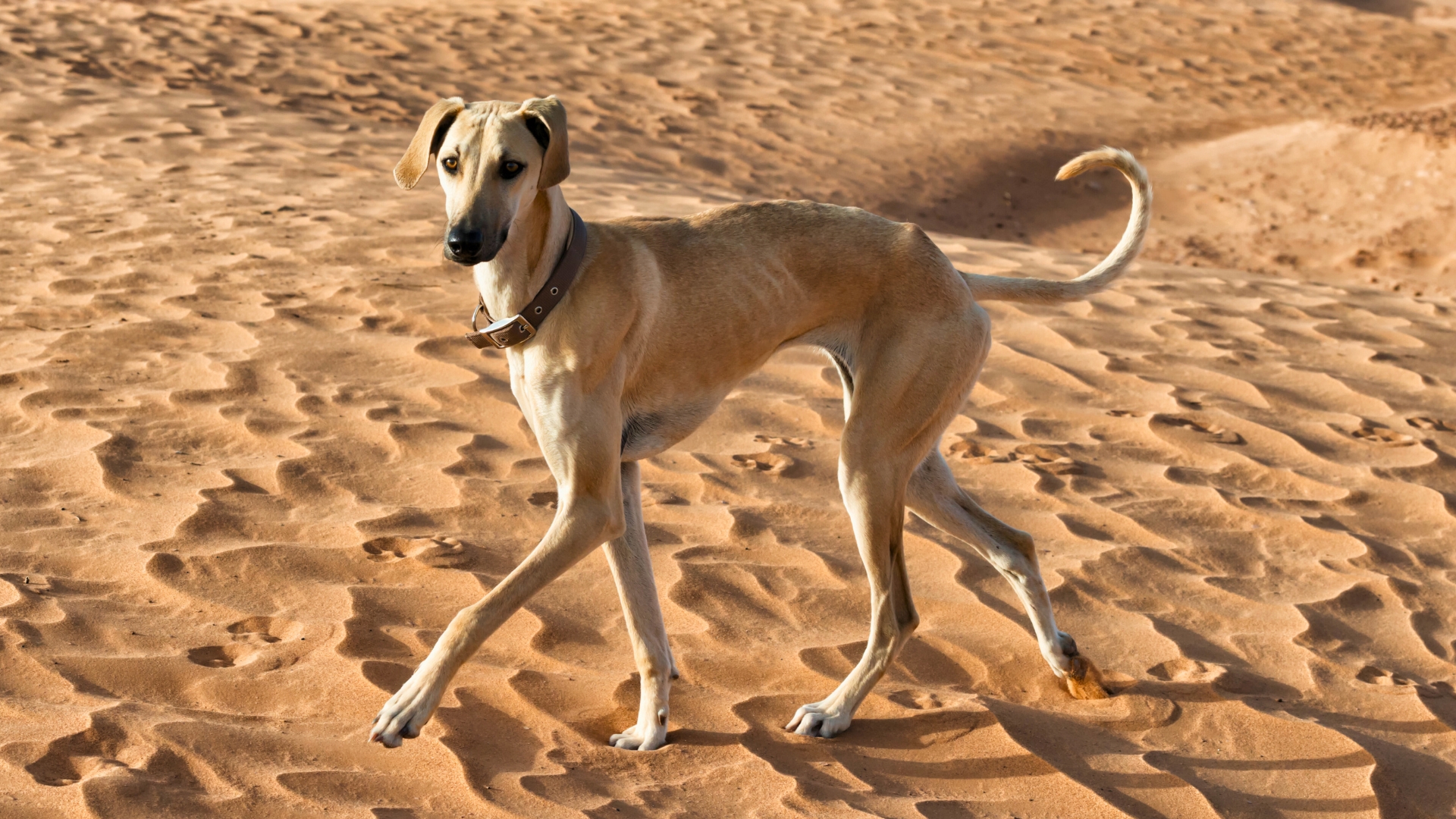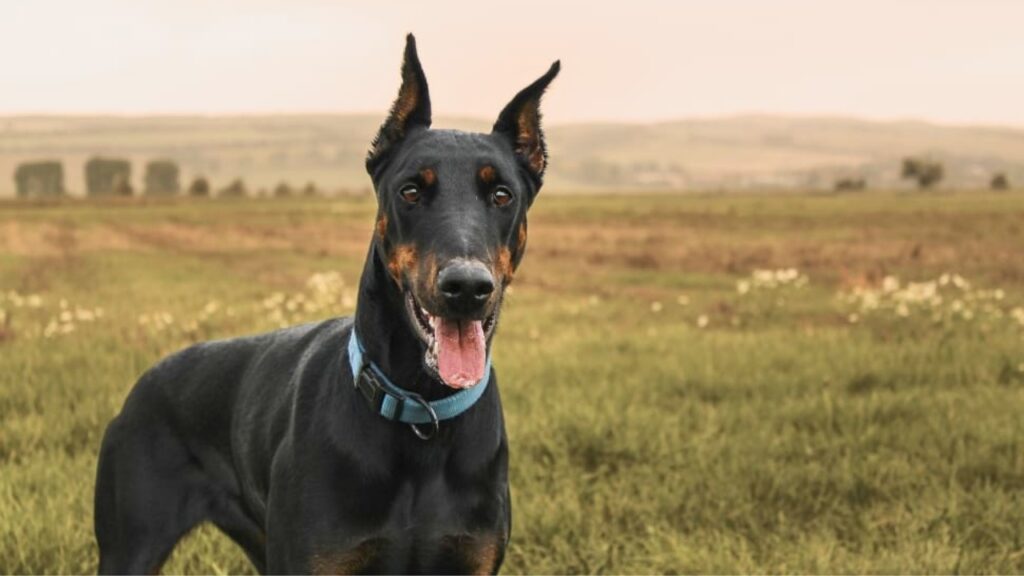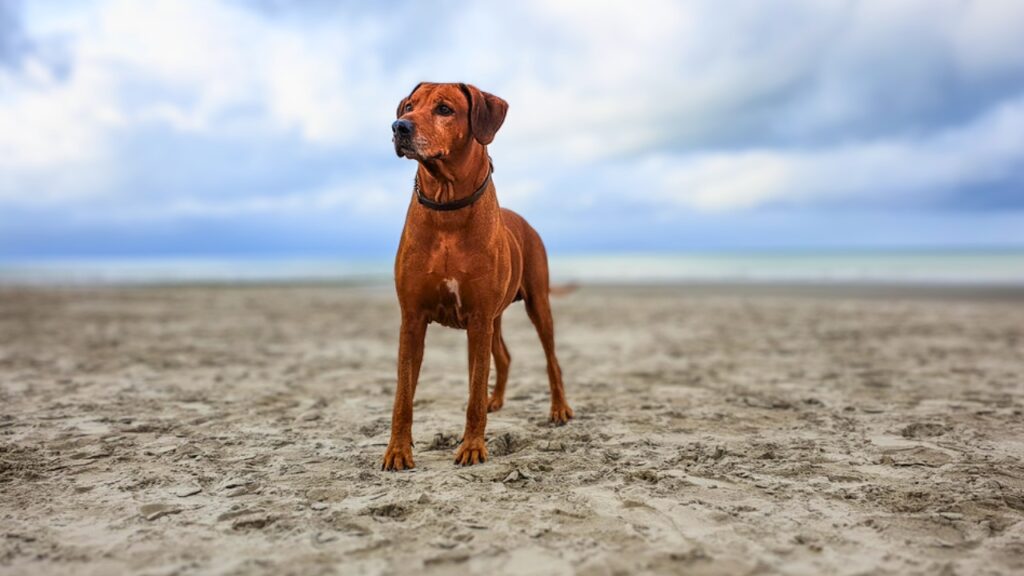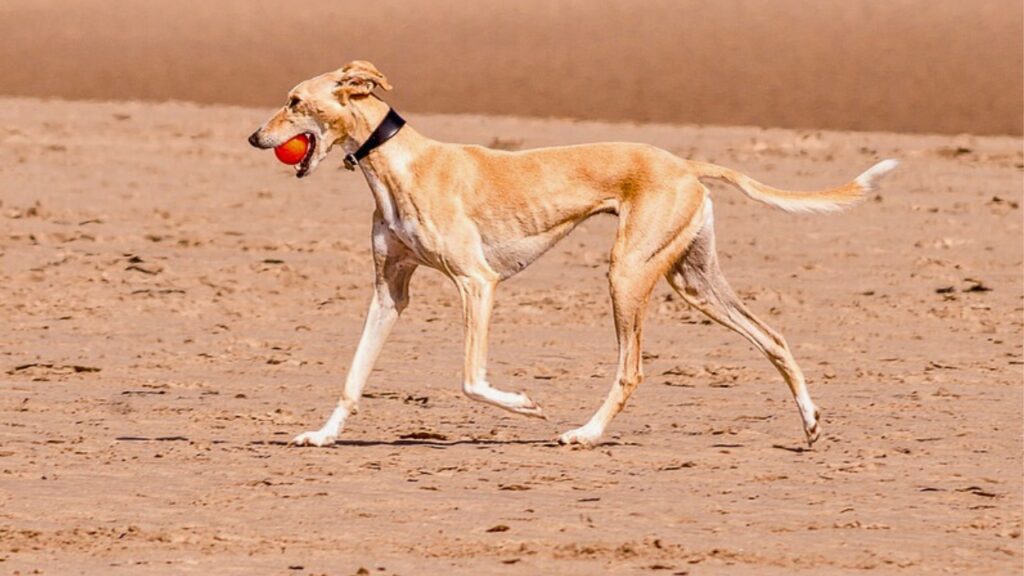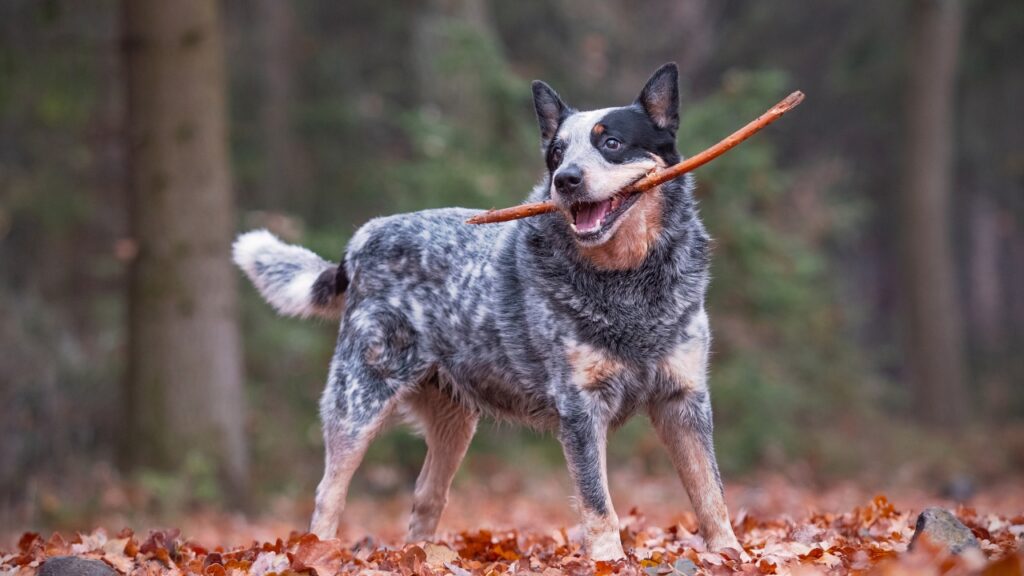Scorching sun, arid landscapes, and minimal shade – the desert presents unique challenges for our canine companions. Choosing the right breed is crucial for their well-being. While all dogs need special care in extreme heat, certain breeds are naturally better equipped to thrive in desert climates. From short-coated breeds that dissipate heat efficiently to those with desert origins, discover the 7 best dog breeds that can handle the heat and make wonderful additions to your family in arid environments.
Did you know that a whopping one-third of our planet is covered in deserts? Yep, those vast, sunny expanses are not just about sand and cacti but are also home to people who love the warmth and unique beauty of desert living.
However, those scorching summers and intense sun can be tough, not just for us but for our furry friends, too. Some dogs just aren’t cut out for the desert life, struggling with the heat and finding it hard to stay cool.
So, if you’re living in this sunny world and thinking about adding a dog to your family, picking the right breed is super important. You’ll want a buddy who loves the heat as much as you do, right? Choosing a dog that thrives in warmer weather means they’ll be a happy sidekick on your desert adventures, fitting perfectly into your lifestyle and the climate.
Below, we’re going to introduce you to some amazing dogs that are basically the superheroes of the desert. They’re cool, they’re comfortable, and they absolutely love the warmth. These breeds are not just about surviving the heat; they’re about thriving in it, making them the perfect pals for your desert home.
Best Dog Breeds for Desert Climates
1. Saluki
Salukis are like the desert experts of the dog world. These slender and tall dogs were once the favorite companions of royalty, helping to hunt in the vast deserts thanks to their incredible speed and agility. Originating from warm climates, Salukis feel right at home under the sun, making them perfect for desert living.
@smithsonianchannel
The saluki is one of the fastest land predators on Earth. Would you dare to try running a race with a saluki? Amazing Dogs
♬ original sound – Smithsonian Channel
With two types of coats – smooth and feathered – Salukis are easy to look after. Their sleek coat doesn’t trap heat, keeping them cool on hot days. A little brush once or twice a week is all they need, though the feathered ones might need a bit more care to avoid tangles in their long, beautiful fur.
Salukis aren’t just about looks; they’re fast, agile, and have a noble grace. They love a good run and mental games to keep them happy and out of trouble. PetMD notes that while they cherish their human families, Salukis have a strong independent streak. They’re not the clingy type and usually take a while to warm up to new people.
These dogs do best in calm households, possibly with older children or just adults, as they prefer a more laid-back approach to playing. Training a Saluki can be a bit of a challenge due to their love for independence, but with patience and experience, they can become well-behaved members of the family.
2. Afghan Hound
The Afghan Hound is a majestic dog breed that originally comes from the mountains of Afghanistan. They were first noticed by British soldiers who were in the area for the Indian-Afghan border wars and brought them back to Europe. These dogs are part of the sighthound family, which means they’re built for speed and have a natural instinct to chase.
One of the Afghan Hound’s superpowers is its big paw-pads, which helped them run on rough terrain without getting hurt. And don’t let their fancy coat fool you; these dogs are desert tough. Their long, flowing hair keeps them insulated, while a shorter layer underneath lets the heat escape, making them well-suited for both hot summers and cold winters back in Afghanistan.
Caring for an Afghan Hound’s coat takes some time – expect to spend a few hours each week brushing to prevent tangles and keep them looking their best.
AKC points out that since Afghan Hounds are sighthounds, they love to chase after things they see, which means letting them roam without a leash isn’t a good idea. They do best when they have a big, safe area where they can sprint freely a few times a week.
Afghan Hounds carry themselves with an air of independence and dignity, but they also have a soft side. They form strong bonds with their people, showing them lots of love and loyalty. This deep connection makes them want to make their humans happy, which can help with things like house training. However, their loyalty means they can find it tough to adjust to new homes if they have to.
3. Basenji
The Basenji, often celebrated for its unique yodel-like howl, is a fascinating hunting dog with roots deep in Central Africa. Legend has it that this breed’s ancestors might have journeyed from Africa to Europe with the Romans, earning the nickname “Canis latrans,” or the barking dog, despite its famous lack of bark.
Thanks to its long history of braving the African deserts, the Basenji is a natural when it comes to dealing with the heat. This breed lacks an undercoat, and its sleek, short hair not only keeps it cool but also makes it a self-cleaning wonder, much like a cat.
The Basenji’s ability to adapt and its tolerance for warmth is unmatched, but it still appreciates a shady spot and plenty of water on those extra sunny days.
Known for their smartness and spirited nature, Basenjis need plenty of play and training to keep them from diving into mischief. Their need for daily mental and physical stimulation makes them the perfect companion for active individuals or families.
While they might be a bit reserved around strangers and cautious with young kids, with the right mix of socialization and training, a Basenji can flourish, bringing a touch of the African wild and lots of love into your home.
4. Doberman Pinscher
Doberman Pinschers are incredibly loyal and have been by our side for many years. They’re not just about being tough; they’re also pretty adaptable, even to hot desert climates.
In the heat, Dobermans are smart about keeping cool. They find shady spots and enjoy dashes between warm sand and any nearby water, like a creek, where they love to swim. Their coats are super easy to take care of, needing just a quick brush once a week to stay neat. Their short fur doesn’t hold onto heat, which is great for staying cool, but because they’re big and muscular, they do need help cooling down after a lot of activity to avoid overheating.
According to PDSA, Dobermans fit right in with active families who keep them busy and involved. They’re smart and calm when trained well, and though their size might be too much for families with little kids or people who’ve never had a dog, they’re perfect for those ready for an energetic companion.
They need lots of exercise and mental challenges to stay happy and out of trouble. Dobermans like to be on the lookout and might bark to let you know when something’s up, but they’re not big barkers by nature. With some training, you can keep any barking under control, making them well-behaved members of the family.
5. Rhodesian Ridgeback
The Rhodesian Ridgeback is a large hound dog from Africa, famous for its unique ridge of fur along its back. Originally bred to hunt big animals like lions, they earned the cool nickname “African Lion Hound” because of their bravery and high energy for the chase.
These dogs are natural athletes who love a good sprint. They’re quick on their feet, capable of matching speeds with the fastest breeds out there, and they’re also known for being reliable guard dogs.
Living in the heat is no problem for Ridgebacks. Their coat is dense but short, helping to keep them cool under the sun. While they do shed a bit, a quick brush once a week keeps their fur neat and their skin healthy.
WebMD states that Ridgebacks enjoy staying active and need both physical and mental exercises daily to stay content. Without enough to do, they might start looking for trouble.
These dogs are clever, though they like to do things their own way, which can make training a bit of a challenge. Sticking to consistent, positive methods works best with them. They’re incredibly loyal to their families and naturally protective, which makes them a bit reserved around new faces, but they’re not big barkers, preferring to keep a watchful eye instead.
6. Greyhound
Greyhounds, known for their incredible speed, trace their roots back to the desert areas of Egypt, making them no strangers to warm climates. Bred for chasing and hunting, they might not be the ideal companions for smaller pets like cats or little dogs due to their strong prey drive.
These slender dogs are perfectly designed for the heat. Their short, thin coats and lean bodies help keep them cool, even in hot climates. However, it’s important to watch out for signs of heatstroke during really hot spells. Greyhounds love soaking up the sun, but because their coats are so thin, they can easily get sunburned. Keeping them in the shade and limiting direct sun exposure will keep them safe and happy when it’s warm outside.
@enzos.escapades
Desert adventure with an #italiangreyhound #puppy and a #greyhound #dog #dubaidogs #iggiesoftiktok #dubai #dubaidesert
♬ Backyard Boy – Claire Rosinkranz
Despite their reputation for speed, Greyhounds are pretty laid-back. They’re calm, independent, and love some affection, thriving with trainers who are patient and can think outside the box. They’re not as high-energy as you might think, often content to lounge around after getting their daily dose of exercise.
According to the RSPCA, Greyhounds are low maintenance in the grooming department, needing a bath only now and then. While they don’t require intense daily workouts, a nice walk twice a day is ideal to keep them healthy and content.
7. Australian Cattle Dog
The Australian Cattle Dog, also known as the “Blue Heeler,” is a hardworking breed developed in Australia for herding cattle and sheep and assisting with hunting tasks.
Originating from the hot and rugged Australian Outback in the mid-1800s, these dogs are built to handle both the scorching summers and cooler temperatures, thanks to their short, dense coat, which requires minimal grooming.
View this post on Instagram
These dogs form tight bonds with their owners and tend to be cautious around strangers, showing a protective side if they feel threatened. While they aim to please those they’re loyal to, their strong herding instinct means they might try to herd not just livestock but also children and even adults, necessitating careful supervision.
Australian Cattle Dogs are bursting with energy and are not suited to a quiet, indoor-only lifestyle. Without a proper outlet for their drive, they can easily become bored and may engage in mischievous behavior. To keep them happy and healthy, it’s essential to involve them in work, sports, or consistent exercise that challenges them both mentally and physically.
Conclusion
Dogs that are best suited for desert climates have unique adaptations that help them manage their body temperature and tolerate heat and extreme temperatures. Breeds like the Mexican Hairless Dog and those with a short coat excel in warmer climates due to their efficient heat dissipation mechanisms.
While some may not expect the Labrador Retriever to thrive in extreme heat, with proper care, access to shade, and air conditioning, they, too, can adapt. Terrier breeds, known for their energy, also show resilience in heat, provided they are monitored closely for signs of overheating.
Ensuring these dogs are comfortable in the desert involves careful attention to their hydration, shelter, and overall exposure to the sun.
Ultimately, choosing the best dog breed for a desert climate depends on individual lifestyles and preferences. While breeds like the Chihuahuas and Australian Cattle Dogs possess inherent adaptations, providing ample shade, water, and modified exercise schedules is crucial for any dog’s well-being in extreme heat. Remember to prioritize responsible pet ownership by researching breed-specific needs and consulting with a veterinarian to ensure your furry friend thrives, even in the harshest desert conditions.

